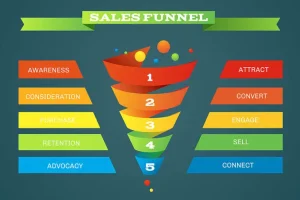
Technology innovations are rapidly altering the business environment, giving businesses that stay current on emerging technologies an advantage and positioning them for long-term success.
Artificial Intelligence, robotic Process Automation and 5G are revolutionizing industries by helping companies automate processes more easily and achieve increased efficiencies.
Artificial Intelligence
As AI becomes an integral component of life, businesses have the chance to gain a competitive advantage by adopting this technology. AI allows businesses to streamline processes, increase automation and gain more informed decision making through data analytics; additionally it is capable of increasing productivity and foster customer engagement.
AI tools can automate up to 70% of business activities, freeing employees up for more critical work that only humans can complete. This is great news for companies requiring time-intensive administrative duties like proofreading or transcribing emails – they don’t need to rely on expensive outside help for such essential duties!
Some have voiced concerns over AI’s future, suggesting it could replace large segments of the workforce in time. However, it’s important to keep in mind that AI is more than a passing fad or passing trend; its effects will continue to spread for years and years to come.
Blockchain
Blockchain technology is revolutionizing various aspects of business landscape, impacting departments across departments with productivity increases and competitive gains.
Supply chains that incorporate tracking capabilities benefit from greater transparency and efficiency, helping locate where products are within the chain quickly to save costs and eliminate waste.
Blockchain can also be used to track products’ journey from their source all the way through delivery, helping companies identify issues in their supply chains earlier and possibly save lives in doing so. Furthermore, its immutability ensures data security and authenticity.
The Metaverse
Few technologies have captured our collective imagination as powerfully as the metaverse, or virtual universe. Its potential for business uses ranges from improving customer engagement and increasing brand value, to revolutionizing work practices and operational efficiency.
Moore’s Law drives computing power while similar laws fuel increases in bandwidth and spectrum to support faster connectivity. As a result, monetization of the metaverse through crypto ecosystems and non-fungible tokens (NFTs) is increasing quickly – providing businesses with new opportunities. To successfully navigate their journey into the metaverse journey quickly.
Digital Twin
Digital twins gather and analyze data from across product development and operations ecosystems and use it to improve outcomes. They allow businesses to reduce operational risks and costs, increase product flexibility and meet strategic goals more easily.
Before embarking on Digital Twin implementation, it’s vital that you develop an adoption strategy to maximize its full potential. Digital Twin’s primary benefit lies in helping achieve your business goals with optimized production processes while meeting future market requirements more easily.
Digital twin middleware comprises virtual machine manager (VMM), interoperability management, data management and model management services. While the VM manager handles front simulation, interoperability management specializes in data collection and knowledge discovery.
Internet of Things
The Internet of Things, commonly referred to as IoT, refers to an interconnected network of physical devices connected by sensors that communicate via the internet and with one another – from smart cars and thermostats, connected kitchen appliances and digital personal assistants like Amazon’s Alexa or Apple’s Siri.
IoT sensor-based applications enable businesses to improve their operational processes through asset tracking, using technologies such as ring-fencing to prevent theft or loss, wearable health monitors, environmental conditions monitoring and remote patient monitoring – among others.
IoT applications rely on various connectivity platforms such as Wi-Fi, cellular networks and low-power wireless systems such as ZigBee and 6LoWPAN for connectivity needs, while also necessitating data management technologies like artificial intelligence, natural language processing and machine learning for data processing tasks.
5G
5G wireless data connectivity offers fast wireless data speeds, massive scalability and ultra-low latency that enables new business models. 5G’s ultra-low latency allows it to respond almost instantaneously, which is especially advantageous in applications like remote robotic surgery, autonomous vehicle use and virtual reality experiences.
5G utilizes open RAN technology that enables multiple vendors to supply components for one tower or base station, increasing efficiency and speeding up deployment processes. Edge computing and distributed networks could decongest network traffic by processing and storing data nearer the end user reducing latency and providing real-time services.







